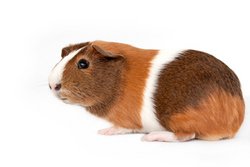Detection of dermatomycosis pathogens
The new standard in fungal infection diagnostics
The EUROArray Dermatomycosis allows reliable and comprehensive detection of dermatomycosis pathogens in less than 24 hours.
Owing to the combined PCR and hybridisation technologies, the EUROArray Dermatomycosis not only delivers prompt and clear results, but is also the most comprehensive PCR-based test for detection of fungal infections of skin, hair and nails worldwide. This assay allows 50 dermatophyte species to be detected together as a group via universal dermatophyte detection. Additionally, 23 dermatophyte, 3 yeast and 3 mould species can be detected and identified in the same analysis.

Moreover, the EUROArray Dermatomycosis offers the following advantages compared to the classic methods and other molecular genetic procedures:
- Simple procedure – no expert knowledge required
- Automated evaluation and report generation
- Highest possible sensitivity even after start of treatment with antimycotic nail polish
- Reliable differentiation of closely related species
- Clear and reliable identification of mixed infections with different fungi
EUROArray Dermatomycosis – pathogen spectrum
| 23 dermatophyte species | ||
|---|---|---|
| Anthropophilic | T. tonsurans, T. interdigitale, T. schoenleinii, T. concentricum, T. rubrum, T. violaceum, E. floccosum, M. ferrugineum, M. audouinii | |
| Zoophilic | T. eriotrephon, T. equinum, T. mentagrophytes* (T. interdigitale), T. simii, T. quinckeanum* (T. mentagrophytes), T. erinacei, T. bullosum, T. benhamiae* (A. benhamiae), T. verrucosum, M. canis, N. persicolor* (M. persicolor) | |
| Geophilic | Geophil, N. fulva* (M. fulvum), N. gypsea* (M. gypseum), N. incurvata* (M. incurvatum) | |
*new nomenclature (Hoog et al, Mycopathologia: 2017 Feb; 182(1-2):5-31)
| 3 yeasts and 3 moulds | ||
|---|---|---|
| C. parapsilosis, C. guilliermondii, F. oxysporum, C. albicans, F. solani, Sc. brevicaulis |
Classic diagnostics of fungal infections
Conventional detection methods for fungal infections are the microscopic examination of infected materials (skin, nail, etc.) and fungus cultivation. Microscopy, however, only provides information on whether there is a fungal infection or not. It does not allow identification of the fungal pathogen. Cultivation, in contrast, allows clear identification of the respective pathogens, but is subject to long waiting times since relevant results are usually only obtained after approximately 4 to 6 weeks. Since species identification in culture is based on the morphology of the pathogen, it is difficult to achieve a clear and correct result, especially in the case of closely related fungal pathogens. In addition, already initiated treatment, e.g. antimycotic nail polish, may hinder the growth of the fungus culture, which may lead to false negative results. In the worst case, such false or false negative results may lead to incorrect diagnosis and treatment of the patient, possibly extending the treatment duration and the related burden for the patient.
Combined diagnostics with classic and new methods
The low sensitivity and limited specificity of classical procedures for dermatomycosis diagnostics can be significantly improved by using the EUROArray Dermatomycosis. The combination of microscopic analysis and investigation of samples using the EUROArray Dermatomycosis allows reliable and pathogen-specific results to be obtained within shortest time (>24 h). In those few cases with positive microscopy findings and negative EUROArray Dermatomycosis pathogen detection, an additional analysis may be performed, e.g. by cultivation. This enables also rarer pathogens that are not included in 56 species covered by the EUROArray Dermatomycosis to be detected.
Relevance of pathogen detection on the species level
Fast and comprehensive diagnostics of mycoses of the skin, hair and nails using the EUROArray Dermatomycosis not only helps to differentiate fungal infections from other dermatological diseases such as psoriasis, keratoses, lichen planus, erythrasma, pityriasis rosea, or seborrhoic eczema, but also offers further advantages for the patient management.

Identification of the source of infection:
The source of infection can often also be identified by identifying the respective pathogen, so that, for example, in patients who are keeping a guinea pig and have an infection with T. benhamiae, the corresponding pet can also be treated to prevent future new infections of the patient or his family members.

Detection of highly contagious pathogens:
Some fungal species such as T. tonsurans, T. soudanense or T. violaceum are highly contagious, so that special measures should be taken upon their detection to prevent transmission to other persons, e.g. in the kindergarden or the gym.

Identification of occupational dermatoses:
With comprehensive identification of the dermatophyte species, also infections acquired at the workplace can be detected. This may be relevant for possible compensation of the employee. This may be the case e.g. in cattle breeders (T. verrucosum) or in gardeners (N. gypsea).

Epidemiological control:
Changes in the spectrum of pathogens, which may occur due to travel or migration movements, can be traced and controlled by means of detailed dermatophyte species determination.

Selection of antimycotic treatment:
Independent of the aspect mentioned above, identification of the fungal species is also decisive for the selection of a suitable antimycotic therapy. Usually, broad spectrum antimycotics are used to fight fungal infections of skin and nails. However, the spectrum of effectiveness of the medications differs, so that some antimycotics are more effective against particular fungal species than others.
